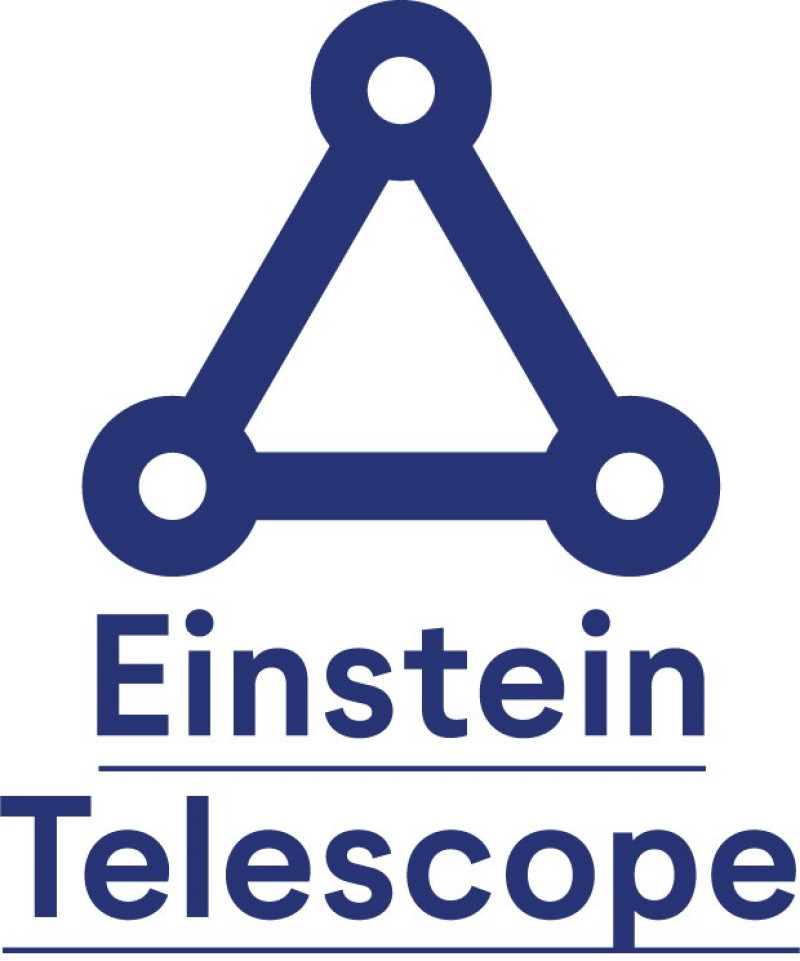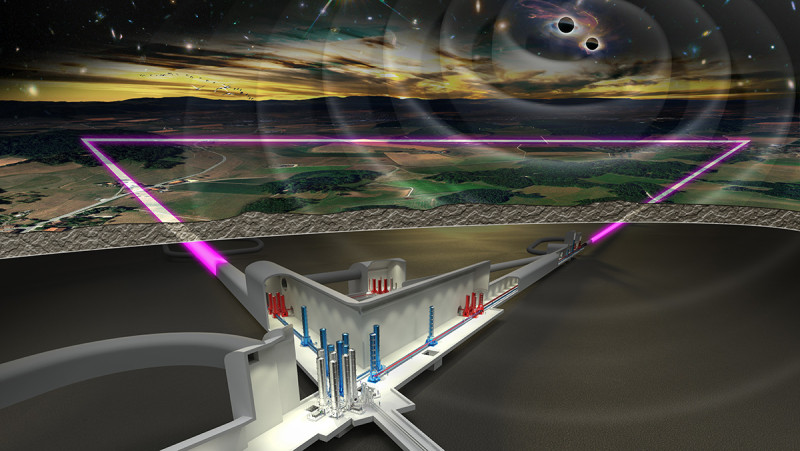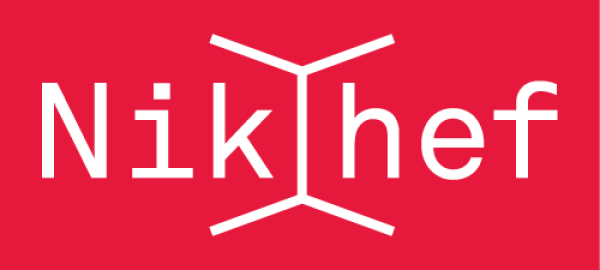ET
Einstein Telescope
Since the first gravitational waves have been detected by the existing detectors at LIGO & VIRGO, plans are being made to build a third generation of these detectors, the so-called Einstein Telescope. One of the possible locations where this research infrastructure could find his home is partially in the province of Limburg in The Netherlands. This could provide benefits for Dutch companies.
This third generation of detectors will be better in a number of ways. It will be constructed underground to avoid surface vibrations. It will be cooled to cryogenic temperatures, reducing internal vibrations. And it will have three arms of 10 km each instead of the current two arms of 3 or 4 km. This will increase the number of events that can be detected from once a week to thousands per year. The third are will allow a single system to point to a location in the sky where the detected event took place whereas the current systems with only two arms need at least two other arms to point out a location in the sky. On top of these basic improvements, we are aiming to optimise all individual components that contribute to the system as well. All of these improvement combined will allow us to look back in time to nearly the big bang itself and in this manner get a much better understanding of the development of our universe.
ET-pathfinder
Before a decision is made about the Einstein Telescope, already we are developing the required Technologies. At Nikhef, we have obtained money for an R&D facility called the ET-pathfinder, which is being built in Maastricht, with support from the province of Limburg and an Interreg grant. Here we build a cleanroom in which significant advancements in optics, mirrors, vibration suppression, cooling and control systems will be tested for the coming decade. Fundamental for these development is the involvement of Dutch and regional industry. In addition to this project, there is the E-TEST project also funded by the Interreg Meuse-Rhine Euregio. E-TEST focuses both on the development of new technologies and a study to obtain a thorough understanding of the subsurface.
We are looking for interested industrial companies to discuss whether there could be a match between their core competences and the challenges posed in building the Einstein Telescope, the Nikhef Industrial Liaison Officer: Jan Visser can be contacted at ILOnet events or by mail. Becoming part of the developments at this early stage could provide an advantage for when the Einstein Telescope will be built, independent of where it will be built.
The activities for the ET-pathfinder that lead to the acquisition of parts are ongoing and the tenders are published at the following page of the E-test project, which is part of the ET-pathfinder activities: https://www.etest-emr.eu/et-technologies/procurement/



